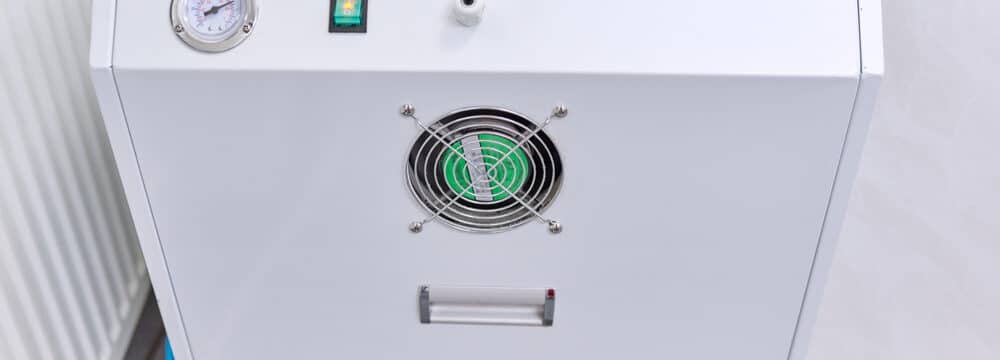Behind every smooth-running dental clinic is an air compressor system that keeps tools reliable, safe, and ready to perform. Whether you’re a solo dentist with a single operator or a growing practice with multiple chairs, the right compressor is more than just a piece of equipment—it’s the backbone of your daily workflow.
But how do you choose the right size? Proper dental compressor sizing ensures your system delivers enough clean, dry air for every operation without unnecessary costs or downtime. Let’s break down what to consider when matching a compressor system to your practice.
Key Factors in Dental Compressor Sizing
Number of Operatories
The size of your compressor is directly tied to how many chairs are in use—and how often.
- 1–2 chairs: A smaller compressor with moderate capacity is usually enough, especially if only one is in use at a time.
- 3–5 chairs: You’ll need a higher-capacity or multi-unit setup to handle simultaneous procedures.
- 5+ chairs: Consider a modular or redundant system designed for continuous operation and scalability.
Tools and Equipment
Different tools place different demands on the air system. High-speed handpieces and suction devices require steady airflow, while air-water syringes and polishers add bursts of demand. Always size for peak usage—not just average load—to prevent performance drops.
Usage Time
A busy practice running multiple operatories all day will need a larger compressor (or a multi-unit system) compared to a practice with lighter scheduling. Duty cycle ratings—how long a compressor can run without overheating—are critical when assessing long-term performance.
Additional Considerations
Noise Levels
Dental offices are patient-facing environments, so compressors should be quiet enough to operate without disrupting treatment. Look for low-decibel, sound-dampened models or consider placing the compressor in a dedicated utility room.
Oil-Free Air
Oil carryover can damage tools and risk patient safety. Oil-less compressors are the standard in dentistry because they deliver clean, dry air while reducing maintenance needs.
Moisture Control
Moisture in compressed air can corrode tools, harbor bacteria, and affect treatment quality. Moisture traps, air dryers, and filters are essential parts of a dental compressor system—especially in humid climates.
Sizing Examples for Dental Clinics
- 1 Chair Practice:
A compact, oil-less compressor with integrated drying and noise reduction. Ideal for solo practices or start-ups. - 2–3 Chair Practice:
A mid-sized compressor with higher output and dual-head pumps for redundancy. Balanced capacity and noise control. - 4–5 Chair Practice:
A modular or multi-unit system designed for simultaneous use. Built-in redundancy ensures uptime if one unit requires maintenance.
Each setup should be customized not just to the number of chairs but also to how often they’re in use. For example, a 3-chair clinic with staggered appointments may need less capacity than a 2-chair clinic that runs both chairs continuously.
Best Practices for Performance
- Size for peak demand to avoid pressure drops.
- Install compressors in a clean, well-ventilated utility space.
- Use inline filters and dryers to maintain hygiene.
- Plan for future growth—it’s better to size slightly above current needs than to replace the system prematurely.
Final Thoughts
The right compressor system is an investment in your clinic’s efficiency, hygiene, and patient care. Proper dental compressor sizing accounts for chairs, tools, scheduling, and environmental conditions—all while keeping noise low and air clean.
If you’re designing or upgrading your system, partner with experts who specialize in dental applications. TruNorth Components provides modular, oil-free compressor solutions engineered for practices of all sizes, ensuring clean, reliable air supply today and room for growth tomorrow.
 Designed, Machined & Assembled in America
Designed, Machined & Assembled in America
